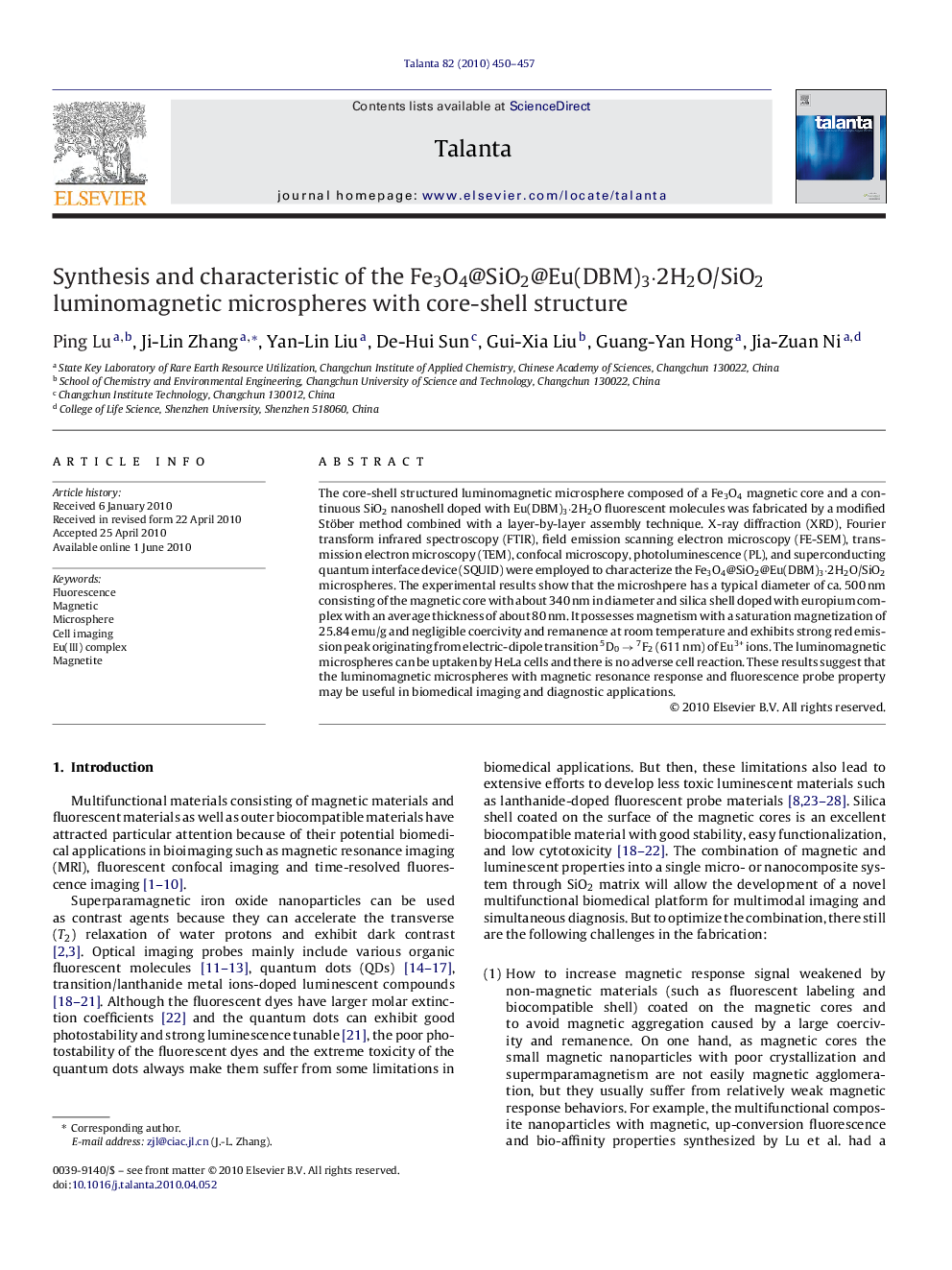| Article ID | Journal | Published Year | Pages | File Type |
|---|---|---|---|---|
| 1244669 | Talanta | 2010 | 8 Pages |
The core-shell structured luminomagnetic microsphere composed of a Fe3O4 magnetic core and a continuous SiO2 nanoshell doped with Eu(DBM)3·2H2O fluorescent molecules was fabricated by a modified Stöber method combined with a layer-by-layer assembly technique. X-ray diffraction (XRD), Fourier transform infrared spectroscopy (FTIR), field emission scanning electron microscopy (FE-SEM), transmission electron microscopy (TEM), confocal microscopy, photoluminescence (PL), and superconducting quantum interface device (SQUID) were employed to characterize the Fe3O4@SiO2@Eu(DBM)3·2H2O/SiO2 microspheres. The experimental results show that the microshpere has a typical diameter of ca. 500 nm consisting of the magnetic core with about 340 nm in diameter and silica shell doped with europium complex with an average thickness of about 80 nm. It possesses magnetism with a saturation magnetization of 25.84 emu/g and negligible coercivity and remanence at room temperature and exhibits strong red emission peak originating from electric-dipole transition 5D0 → 7F2 (611 nm) of Eu3+ ions. The luminomagnetic microspheres can be uptaken by HeLa cells and there is no adverse cell reaction. These results suggest that the luminomagnetic microspheres with magnetic resonance response and fluorescence probe property may be useful in biomedical imaging and diagnostic applications.
Graphical abstractThe Fe3O4@SiO2@Eu(DBM)3·2H2O/SiO2 microsphere composed of Fe3O4 particulate as a magnetic core and silica doped with fluorescent europium complex as an outer shell was fabricated. The obtained composite microspheres with hypersensitive red fluorescence, strong magnetic response, and good water-dispersibility have potential biomedical applications in bioimaging.Figure optionsDownload full-size imageDownload as PowerPoint slide
